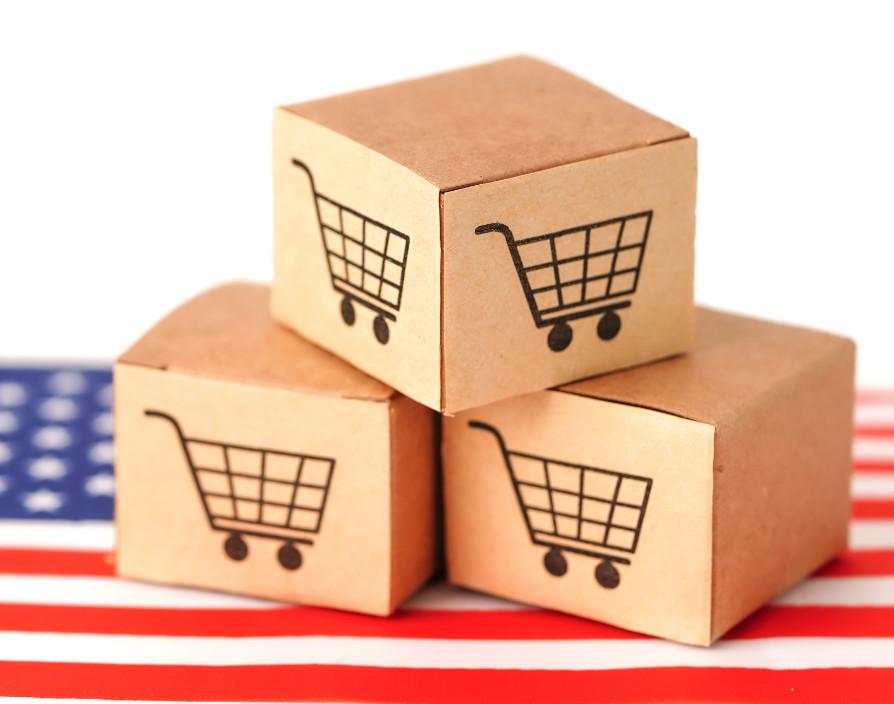Establishing your eCommerce brand across the pond: five-steps to launching US fulfilment
“Setting up shop” stateside is not straightforward. Emma Dempsey, CEO, James and James Fulfilment, shares five tips on eCommerce fulfilment for businesses looking to expand.
Many growing brands are facing pressure to operate effective eCommerce fulfilment across the globe. Driving this is increasing demand for certainty and speed of delivery from consumers in various countries. In response, many eCommerce companies are considering opening fulfilment centres in alternative locations, with the US market being a region that continues to be of interest.
But US expansion presents a particular set of challenges that makes the process more difficult than brands might expect. Whilst often underestimated, an extensive amount of planning and preparation is required behind the scenes.
The current US retail market
The UK and USA have a history of strong trade ties. In fact, the UK Government recently prioritised the maintenance of its trading relationships with the USA and the European Union. In addition to perceiving the US as a ready-to-trade market, the UK Government has pledged to continue promoting exporters to the US, among other regions.
Statista predicts that by 2025, online shopping revenue in the US will exceed 1.3 trillion dollars, a statistic that reflects the exciting potential to drive retail eCommerce revenue in the US market. However, further education about the opportunities is essential for British businesses, particularly when considering research by Newable that reveals only 27 percent of SMEs have selected the US as a preferred market destination. At its highest level, this involves acknowledging the five key steps UK eCommerce businesses should consider when attempting to launch their business stateside.
Step 1: Register as a foreign for-profit corporation
Firstly, to gain licensing for conducting business in the US, you will need to register your existing organisation as a foreign for-profit corporation with the appropriate US governing body, which varies across states. For example, in Ohio, where we have a fulfilment centre, this requires a 530A form. Completing this is relatively simple and would typically call for the following details:
- Page 1: Any existing contact details for your business
- Page 2: An acquired Certificate of Good Standing from Companies House
- Page 3: The particulars of an “agent” in Ohio – which can function as your fulfilment partner and centre, such as James and James
- Page 4: A signed and sealed hard copy of the form from A Notary Public in your local area.
Step 2: Register to collect and remit sales tax
US states possess different regulations regarding sales tax, unlike the UK, where there’s a blanket Value Added Tax (VAT). Providing your organisation has a “nexus” or permission to trade, businesses are typically required to collect sales tax from consumers and convey (or remit) this to the state.
Crucially, there are two types of nexus to consider within these circumstances: ‘Sales tax nexus’ and ‘Economic nexus’. The former arises from a physical presence in the state, such as having inventory in a fulfilment centre, with the latter referring to a certain amount of revenue or orders from a state. Therefore, say your business held stock in Los Angeles, with your largest markets being New York and Columbus, you’d assemble and remit sales tax in California, New York and Ohio.
Step 3: Successfully establish your local fulfilment centre
Setting up a fulfilment centre is the third step. Nationwide shipping isn’t as quick or easy in the US as in the UK due to the size difference. Therefore having multiple fulfilment centres can help. However, it’s important to note that this adds complexity to the inventory management. The Midwest is an ideal starting location as it enables 2-3 day shipping across North America (a bar set by Amazon Prime).
A potential setback in managing inventory and orders internationally is time difference. The five-to-eight hour time difference adds a layer of complexity. Businesses should therefore consider a powerful cloud-based warehouse management system (WMS) and order management system (OMS). Additionally, it’s crucial for the centre to be set up to effectively manage customer product returns, an area often cited as a bugbear for consumers.
Furthermore, linking these different systems with your UK HQ or fulfilment centres ensures better data management and insights, permitting teams to remain up to date in real-time with the status of stock levels and goods entering and leaving the centre. Through this, retailers can track further information about products, which can be utilised to inform future marketing campaigns and product purchasing decisions within that region.
Step 4: Transport goods in bulk to the US
Once you have successfully set up your US fulfilment centre, the next step is to send over your stock in bulk. Using a freight forwarding company helps with managing elements of the logistics and customs processes, therefore minimising inconvenience. This includes arranging the transportation of goods to the US from either manufacturers in other countries or existing UK stock. A freight forwarding company will also aid in customs management and act as the Customs Broker or Importer of Record (IOR); creating a smoother process for goods transported through customs, and guaranteeing that accurate duties are paid.
Step 5: Ready, set, sell
While it’s likely you’re already making some sales in the US, your marketing plan can really begin to excel once your set up is complete. When implementing a marketing strategy, it’s fundamental to consider the localisation of your eCommerce store (website) for American customers, ensuring sizes are in US or imperial measurements and prices are in dollars. Making the most of your local fulfilment centre can be achieved by promoting faster delivery, cheaper shipping and simpler returns to US customers.
Developing email and social media campaigns in line with US culture and its more direct approach is beneficial, and should be used in conjunction with appropriate discount days and national holidays. Lastly, be sure to register and protect any trademarks and intellectual property both in the US and at home.
Conclusion
Establishing the right support teams and operations is fundamental if eCommerce businesses are to exploit the US market fully. Working with proven fulfilment partners ensures goods are successfully delivered and in turn, brands can flourish, tapping into the 1.3 trillion dollar opportunity.
Share via:








































